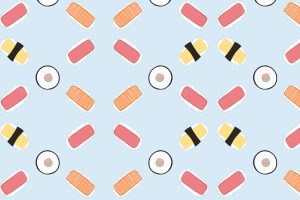Feeding Texture Transitions in the First Year

In the first year of your baby’s life there will be many changes. By the first year, many babies will have made the transition from sitting to crawling and maybe even walking. Sleep becomes more regular with predictable naps and sleeping through the night for most babies.
Changes happen in the feeding department, too. All babies start out on a liquid diet, consisting of either breast milk or infant formula. Through that first year, solid food is introduced and feeding texture transitions become increasingly complex, allowing baby to learn how to eat.
Remember, every baby is different, and there is flexibility about when these texture transitions occur. There will always be that baby who skips pureed food and goes right into self-feeding chopped textures. Conversely, some babies will really enjoy pureed foods and stay on these a bit longer.
There is a “method to the madness,” if you will, to the texture transitions that happen in the first year of your baby’s life. The purpose behind all of these transitions is to help your child learn how to chew, swallow, and manipulate different foods in his or her mouth. As your baby transitions to firmer and more complex textures, mouth muscles become stronger and more sophisticated, laying the foundation for speech and language development.
Many parents wait for teeth to emerge before they allow chopped food. The truth is, babies don’t need teeth to chew. They do quite well without them!
Here are the texture transitions you can expect to occur in the first year, along with a rough timeline of when they should happen:
Birth to four months.
This time is usually a liquid diet, consisting of breast milk or infant formula.
Four to six months.
The American Academy of Pediatrics (AAP) recommends waiting to introduce solid food until 6 months, but some babies will be ready earlier. Between four and six months, offer your baby watery, pureed foods such as baby cereal mixed with breast milk or infant formula and gradually decrease the amount of liquid added to thicken the puree. By the end of this time frame, your baby should be eating regular pureed foods with a pudding-like texture and thickness.
Six to eight months.
During this time, you’ll want to move from thick, pureed foods to more lumpy textures. This phase can be a tough transition for some babies. The presence of lumps within a smooth puree can be confusing and off-putting for some. Lumps are more challenging for baby to eat.
Eight to 10 months.
Your baby can transition from lumpy purees to chopped foods. Chopped food should be about a 1/2 inch (or a small dice) in size so that your baby is unlikely to choke on it. At this time, your baby should be able to pick up food and transfer it to his or her mouth, either by using a raking motion or a pincer grasp. Also, allow your baby to use a spoon. It will be messy, but this is part of the learning curve, too.
Ten to 12 months.
At this point, chopped foods (and more variety of them) are a mainstay of the diet, along with finger foods, such as mini-muffins (cut up), large pieces of banana, and sandwiches (again, cut up). You may cut food so that the choking risk is minimized, but also allow your baby to take larger pieces of food and learn how to take small bites.
Sources:
- Castle JL and Jacobsen MT
- Fearless Feeding: How to Raise Healthy Eaters from High Chair to High School
- Jossey-Bass
- 2013.
Powered by Bundoo®










